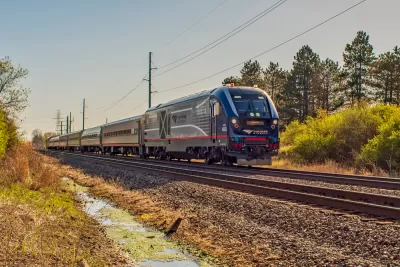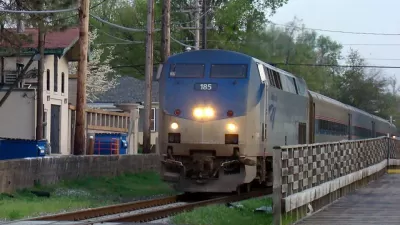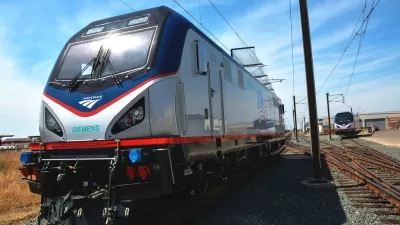A project that won funding from federal stimulus programs during the Obama administration is finally paying off on the Amtrak route between Chicago and St. Louis.

Amtrak trains traveling between St. Louis and Chicago can now reach speeds of 90 miles per hour, thanks to new brakes installed after three years of delays.
According to an article reporting the news by Mark Schlinkmann for the St. Louis Post-Dispatch, the new top speeds are one step closer to a final goal of top speeds of 110 miles per hour, which is expected in another year and half. The new top speed trims 15 minutes off the 284-mile journey.
The new top speeds were delayed after the 2017 completion date due to a "longer-than-expected process of installing and testing new GPS-related safety technology — called positive train control," adds Schlinkmann.
"The changes are part of a $1.95 billion upgrade of the St. Louis-Chicago corridor that was mostly finished in 2017," according to Schlinkmann. "The project, largely funded by federal economic stimulus dollars allotted under then-President Barack Obama, included new rails and concrete ties, new Amtrak stations in Alton and elsewhere and improved crossing gates to keep vehicles from weaving around crossing bars."
Planetizen picked up the news of the high speed rail funding that included the Chicago-to-St. Louis improvements in 2010.
FULL STORY: Trains on Amtrak’s St. Louis-Chicago route now running at up to 90 mph

Study: Maui’s Plan to Convert Vacation Rentals to Long-Term Housing Could Cause Nearly $1 Billion Economic Loss
The plan would reduce visitor accommodation by 25,% resulting in 1,900 jobs lost.

North Texas Transit Leaders Tout Benefits of TOD for Growing Region
At a summit focused on transit-oriented development, policymakers discussed how North Texas’ expanded light rail system can serve as a tool for economic growth.

Why Should We Subsidize Public Transportation?
Many public transit agencies face financial stress due to rising costs, declining fare revenue, and declining subsidies. Transit advocates must provide a strong business case for increasing public transit funding.

How to Make US Trains Faster
Changes to boarding platforms and a switch to electric trains could improve U.S. passenger rail service without the added cost of high-speed rail.

Columbia’s Revitalized ‘Loop’ Is a Hub for Local Entrepreneurs
A focus on small businesses is helping a commercial corridor in Columbia, Missouri thrive.

Invasive Insect Threatens Minnesota’s Ash Forests
The Emerald Ash Borer is a rapidly spreading invasive pest threatening Minnesota’s ash trees, and homeowners are encouraged to plant diverse replacement species, avoid moving ash firewood, and monitor for signs of infestation.
Urban Design for Planners 1: Software Tools
This six-course series explores essential urban design concepts using open source software and equips planners with the tools they need to participate fully in the urban design process.
Planning for Universal Design
Learn the tools for implementing Universal Design in planning regulations.
City of Santa Clarita
Ascent Environmental
Institute for Housing and Urban Development Studies (IHS)
City of Grandview
Harvard GSD Executive Education
Toledo-Lucas County Plan Commissions
Salt Lake City
NYU Wagner Graduate School of Public Service





























